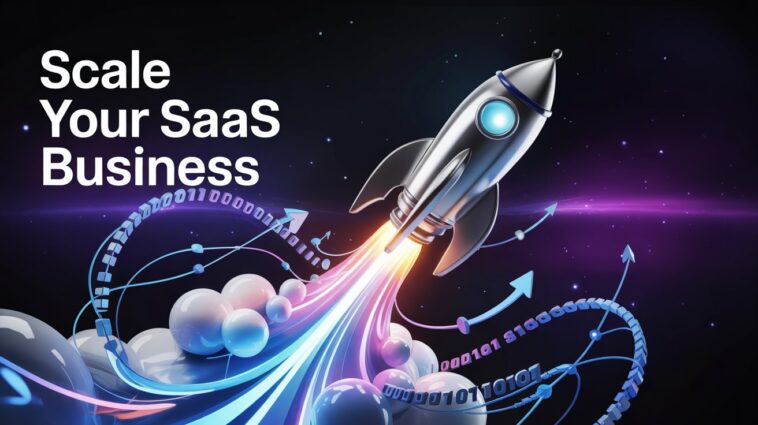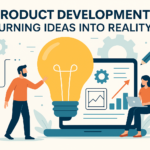In the fast-paced world of B2B SaaS (Software as a Service), scaling your business requires more than just having a great product or service. With the increasing competition and changing market dynamics, companies need to adopt the right strategies and processes to expand efficiently and sustainably. Scaling B2B SaaS involves not just product development, but optimizing sales, customer support, and retention strategies.
Based on industry insights and proven methodologies, here are seven actionable tips to help scale your B2B SaaS business successfully:
1. Focus on Product-Market Fit
One of the most critical elements of scaling a B2B SaaS business is ensuring you have a strong product-market fit (PMF). If your product doesn’t solve a significant problem or doesn’t resonate with the target market, scaling will be much more difficult.
-
How to Achieve Product-Market Fit:
-
Customer Feedback: Engage directly with your customers to understand their needs, pain points, and feedback. Actively use this information to refine and improve your product.
-
Iterative Improvements: Don’t wait until your product is “perfect.” Continuously iterate on your product based on feedback, ensuring that it meets the evolving needs of your customers.
-
Measure Retention: If your customers keep coming back and using your service, it’s a strong indicator that you have product-market fit. High retention rates and low churn are signs of success.
-
Remember, scaling too quickly without having a product-market fit can lead to wasted resources and ineffective marketing campaigns. Ensure that you’ve nailed this before accelerating growth.
2. Leverage Data-Driven Decision Making
Data is the backbone of scaling any business. For B2B SaaS businesses, having access to real-time data and analytics can help you make smarter decisions and optimize growth strategies. By tracking key performance indicators (KPIs), customer behavior, and marketing ROI, you can make informed decisions about where to allocate resources and which strategies are most effective.
-
Key Metrics to Track:
-
Customer Lifetime Value (CLTV): This helps you understand how much a customer will bring to your business over time. It informs decisions about customer acquisition costs (CAC).
-
Churn Rate: A high churn rate signals that customers are not retaining your service. Identifying the reasons behind churn allows you to make adjustments to the product or customer experience.
-
Monthly Recurring Revenue (MRR): Tracking MRR helps gauge the health and predictability of your SaaS business.
-
Customer Acquisition Cost (CAC): This metric lets you understand how much you need to spend to acquire a customer. When compared with CLTV, it helps ensure you’re acquiring customers profitably.
-
Utilizing a robust data analytics platform or dashboard will enable you to monitor these metrics in real-time, adjusting your strategies accordingly for maximum impact.
3. Prioritize Customer Success and Retention
In SaaS businesses, customer acquisition is important, but retaining existing customers is equally, if not more, critical. A customer-centric approach focused on customer success can significantly reduce churn and increase lifetime value. Retention is especially important in B2B SaaS, where customer relationships are typically longer and more lucrative.
-
How to Boost Retention:
-
Onboarding Experience: Create a seamless onboarding experience that ensures customers understand how to use your product to its fullest potential. Well-structured training resources, video tutorials, and a dedicated onboarding team can reduce early-stage confusion.
-
Customer Support: Provide exceptional customer support that addresses issues quickly and efficiently. A responsive customer service team can turn a potentially negative experience into a positive one.
-
Personalization: Offer tailored solutions or feature recommendations based on customer usage patterns. This makes your product indispensable and increases customer loyalty.
-
Proactive Engagement: Regular check-ins, product updates, and usage reviews can help you stay in touch with customers and address their evolving needs before they consider leaving.
-
By fostering a customer-first mindset, you can create lasting relationships that lead to greater retention and revenue.
4. Expand Your Marketing Reach with Inbound Strategies
To scale your B2B SaaS business, you need a strong and scalable marketing strategy. Inbound marketing, which attracts customers through valuable content, SEO, and social media, is an excellent way to increase brand awareness and drive organic leads.
-
Effective Inbound Tactics:
-
Content Marketing: Publish high-quality, informative content like blog posts, whitepapers, case studies, and videos that address your target audience’s pain points. This positions your brand as an industry leader.
-
Search Engine Optimization (SEO): Optimize your website for search engines so that potential customers can easily find your SaaS solution when searching for relevant keywords.
-
Webinars and Thought Leadership: Hosting webinars on trending topics or thought leadership can help you engage directly with your audience and build trust in your expertise.
-
Social Media Engagement: Actively participate in relevant discussions on LinkedIn, Twitter, and other platforms, offering solutions and insights that demonstrate your knowledge of the industry.
-
Inbound marketing allows you to generate high-quality leads over time and builds your credibility in the market.
5. Build a Scalable Sales Process
As your SaaS business grows, the complexity of your sales process also increases. A scalable and repeatable sales process is crucial for driving consistent growth. Building an efficient sales pipeline and providing your sales team with the tools and training they need to succeed will enable you to capture and nurture leads at scale.
-
How to Build a Scalable Sales Process:
-
Sales Automation: Use CRM tools like Salesforce or HubSpot to automate repetitive tasks such as lead tracking, email follow-ups, and customer data management. This frees up time for your sales team to focus on closing deals.
-
Lead Qualification: Implement a solid lead scoring system to prioritize leads based on their likelihood to convert. This ensures that your sales team focuses on high-value opportunities.
-
Sales Playbooks: Create standard operating procedures and playbooks that outline the steps and best practices for sales calls, demos, and closing deals. This helps maintain consistency and efficiency across your sales efforts.
-
By streamlining and automating your sales process, you can focus on scaling the business without compromising the quality of customer acquisition.
Conclusion
Scaling a B2B SaaS business requires a comprehensive approach that spans product development, marketing, sales, customer retention, and operational efficiency. Web Development plays a critical role in the scalability of your B2B SaaS business. A well-designed, scalable web platform ensures smooth user experiences, enhances functionality, and supports integrations, all of which are essential for handling growth and maintaining customer satisfaction.
This post was created with our nice and easy submission form. Create your post!





